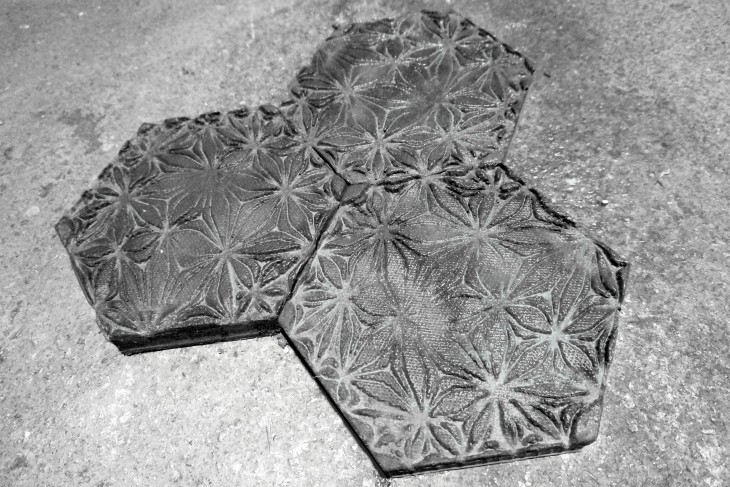Our intention with this experiment was to create a hexagonal grid within the tile boundaries which could be universally distorted to create topography or other dynamic surfaces for de-centralized irrigation to the edges. The channels for water flow are derived from this grid using a simple script and are embedded within an undulating surface so as to appear and disappear with the changing elevation. Through triangulation, we were able to manipulate the vertices of the grid independently in order to provide pathways for the flow of water, and allocate the zones for collecting and dispersing the water to neighboring tiles. Read More
Category Archives: Elena Mitrofanova
Vector BiValve

3d printed joints have two categorical ways to interact with thin fiberglass rods. The joint may either constrain the rod, or traverse along its length. In this design, we explored the possibility that each 3d printed component could introduce a new control point to the geometry of a rod’s vector, in addition to the “joint” operation.
The geometry of the 3d printed components is derived from this objective. The closed loop of an orientable surface is perpendicular to the rod’s vector on the apex that the rod passes through, and parallel to its vector on the apex that offers a second control point. The loop geometry is also designed to 1) minimize material without sacrificing the component’s bending strength and 2) meet additive manufacturing’s desire for geometrical self-support during printing. Read More
InterWeave
Each element in this design is a rectangular wood strip of the same length. The width of the strips begins at 4cm and decreases gradually as the structure continues up. Structurally, the tower is organized in two perpendicular axes, crossing at a central datum. In both axes, the strips bend in an alternating pattern as they go up, switching direction at each bend’s apex. Within each axis, the strips notch together when they cross. When the two axes cross at the central datum, they weave through each other. This weaving joint (along with the surrounding bent strips acting in tension) gives the structure its stability. An “X” in one axis weaves through an “eye” in the opposing axis. The angles of each “X” determine and stabilize the position of the “eye” that encapsulates it. As the width of the strips decreases, the radius of the “eye” increases. This causes all the strips around it to increase in radius, becoming thinner in overall plan diameter. Therefore, as each section’s strips get thinner, that section of the tower gets taller.


/25_5.jpg)